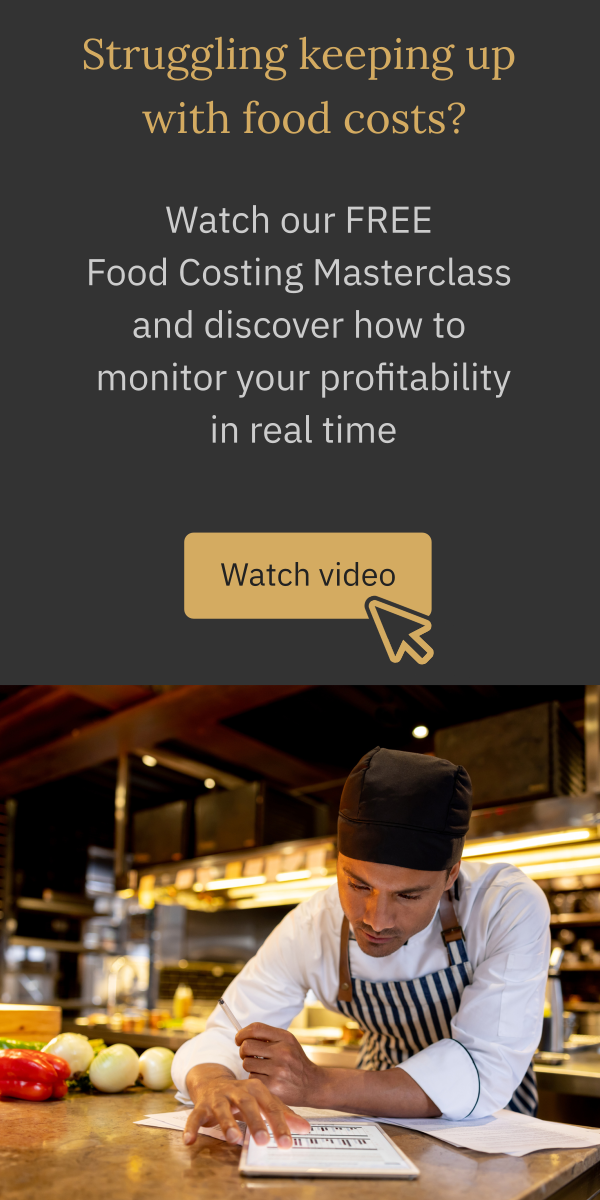Stay in the loop
Table of Contents
- 1 What Is Food Cost?
- 2 Why Accurate Food Costing Is Crucial
- 3 Step-by-Step Guide to Calculating Food Costs in Your Restaurant
- 4 Tools That Help: Why Use a Food Costing App?
- 5 Common Mistakes in Food Costing (and How to Avoid Them)
- 6 Bonus: Food Cost Benchmarks by Venue Type
- 7 How RapidStock Helps You Optimize Food Costing
- 8 Take Control of Your Food Costs with RapidStock
In the fast-paced world of restaurants, bars, and catering services, maintaining a profitable operation hinges on one critical metric: food cost. Food costing isn’t just about pricing dishes; it’s about understanding your expenses, minimizing waste, and maintaining a healthy profit margin without sacrificing quality. For restaurant owners, operators, and food entrepreneurs across Canada, the USA, and Europe, accurate food costing is no longer optional. It’s essential.
At RapidStock, we specialize in restaurant inventory, bar inventory, and event inventory solutions designed to help you streamline cost tracking and make data-informed decisions that maximize profit. In this comprehensive guide, we break down the process of costing food, including formulas, tools, and best practices.
What Is Food Cost?
Food cost is the total expense incurred to produce a dish, usually expressed as a percentage of its selling price. It includes the cost of all ingredients used in the recipe, factoring in portion sizes, waste, and even the tare weights of liquor bottles for beverages.
Formula
Food Cost %=(Cost of Goods SoldTotal Sales)×100\text{Food Cost \%} = \left( \frac{\text{Cost of Goods Sold}}{\text{Total Sales}} \right) \times 100Food Cost %=(Total SalesCost of Goods Sold)×100
An ideal food cost percentage varies by concept and location but generally ranges between 25% and 35%.
Why Accurate Food Costing Is Crucial
Profitability
Minor errors in costing can lead to significant losses over time.
Menu Engineering
Knowing the actual cost helps determine the optimal price for profitability.
Inventory Control
Costing is closely tied to how well you manage stock.
Waste Reduction
Helps identify shrinkage, over-portioning, or spoilage.
Scalability
Accurate costing becomes more essential as you expand.
According to a report from the National Restaurant Association, food and beverage costs are among the top three operational costs for most restaurants. Without robust tracking, these can easily spiral out of control.
Step-by-Step Guide to Calculating Food Costs in Your Restaurant
Step 1: Inventory Management
Before you can calculate food cost, you need accurate inventory data. This includes:
- Beginning Inventory
- Purchases During the Period
- Ending Inventory
Cost of Goods Sold (COGS) Formula
COGS=(Beginning Inventory+Purchases)−Ending Inventory\text{COGS} = (\text{Beginning Inventory} + \text{Purchases}) – \text{Ending Inventory}COGS=(Beginning Inventory+Purchases)−Ending Inventory
Utilize a restaurant food cost app, such as RapidStock, to streamline this process. It automates real-time tracking of food, beverage, and liquor inventories, including tare weights for bottles.
Step 2: Track Ingredient Costs
Compile a master list of ingredients with:
- Unit cost (e.g., $3 per lb of chicken)
- Unit of measure
- Supplier pricing updates
Use invoices or your POS-integrated system to stay updated on price fluctuations, which are common in the foodservice industry.
Step 3: Recipe Costing
Each dish should have a recipe costing sheet. This is your “sample costing for food” where you:
- List all ingredients.
- Enter the portion size and cost for each.
- Calculate the total cost per serving.
- Add an allowance for waste, prep loss, or cooking shrinkage.
Let’s look at an example:
| Ingredient | Amount | Cost per Unit | Total Cost |
|---|---|---|---|
| Chicken breast | 6 oz | $3.00/lb | $1.13 |
| Olive oil | 1 tbsp | $0.15 | $0.15 |
| Spices | 0.1 oz | $0.80/oz | $0.08 |
| Rice | 5 oz | $1.50/lb | $0.47 |
| Total | $1.83 |
If the dish sells for $8.00, your food cost is:
1.838.00×100=22.9%\frac{1.83}{8.00} \times 100 = 22.9\%8.001.83×100=22.9%
Step 4: Include Overlooked Costs
To get an accurate picture, also consider:
- Packaging (for takeout/delivery)
- Condiments
- Garnishes
- Spillage/Waste
- Tare weights for liquor bottles (when calculating bar costs)
For bars, using tare weight tracking through RapidStock prevents profit leaks from inconsistent pour sizes or theft.
Step 5: Calculate Menu-Wide Food Cost Percentage
Once each dish is costed, calculate your overall menu food cost percentage weighted by sales volume. This helps you identify low-margin bestsellers or high-cost underperformers.
Tools That Help: Why Use a Food Costing App?
Manual spreadsheets are time-consuming and prone to human error. A modern food costing app like RapidStock brings accuracy, speed, and efficiency.
Features to Look For:
- Real-time inventory tracking
- Integration with POS systems
- Multi-location visibility
- Automated recipe costing
- Liquor bottle tare weight tracking
- Supplier price updates
- User access control and audit logs
RapidStock’s restaurant inventory and bar inventory modules are tailor-made for small to medium-sized food businesses and event venues across Canada, the USA, and Europe. Whether you’re managing one location or a chain, the system grows with you.
Common Mistakes in Food Costing (and How to Avoid Them)
| Mistake | How to Avoid |
|---|---|
| Not updating ingredient prices | Use a dynamic costing app that syncs with suppliers |
| Ignoring waste and prep loss | Include average shrinkage rates in recipe costing |
| Guessing liquor usage | Use precise tare weights and scale-based tracking |
| Failing to account for specials or promos | Adjust food cost formulas to reflect temporary pricing |
| Poor inventory control | Conduct weekly inventory checks using a digital tool |
Bonus: Food Cost Benchmarks by Venue Type
| Venue Type | Ideal Food Cost% % |
|---|---|
| Fast Casual | 25–30% |
| Full-Service Dining | 28–35% |
| Catering/Event | 23–28% |
| Bars & Lounges | 18–24% (liquor) |
| QSR | 20–25% |
These ranges vary by region, supplier agreements, and menu complexity, but they serve as useful benchmarks for comparison and evaluation.
How RapidStock Helps You Optimize Food Costing
RapidStock isn’t just another restaurant food cost app; it’s a complete solution built from the ground up for hospitality entrepreneurs. From liquor control to event inventory tracking, it removes guesswork from your costing process.
Here’s how you benefit
- Save hours every week on inventory and cost reporting.
- Avoid stockouts and over-ordering, leading to less waste.
- Get actionable insights into top-performing items and profit drains.
- Adapt pricing strategies in real time as supplier costs fluctuate.
- Track tare weights to pinpoint liquor shrinkage and inconsistencies.
Whether you’re a neighborhood café, high-volume bar, or multi-location chain, RapidStock makes food and beverage costing seamless and profitable.
Take Control of Your Food Costs with RapidStock
Accurate food costing is the backbone of a profitable restaurant or bar. It’s not just a financial metric; it’s a decision-making tool that informs pricing, menu development, staffing, and operations. By implementing a robust costing system and using innovative tools like RapidStock, you’ll position your business to thrive in a competitive market.
Ready to cut costs and increase profit margins?
Start using RapidStock’s powerful restaurant and bar inventory tools today. Visit rapidstock.com to learn more and book a free demo.
About the author
Fabrice Tremblay
Fabrice founded RapidStock in 2017 after working as a production planner for almost two decades. Briefly a bar owner and tech lover, he was inspired by the challenge of helping passionate entrepreneurs in the bars and restaurants industry.
When not working on RapidStock, Fabrice enjoys cooking and spending time outdoors with friends and family.
More tips and tricks



